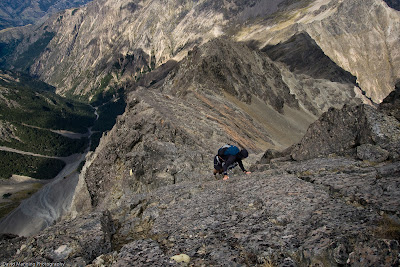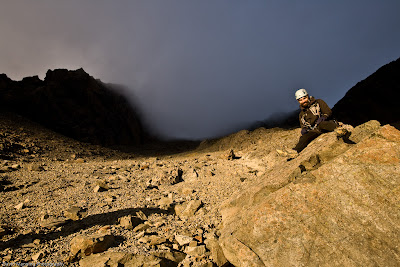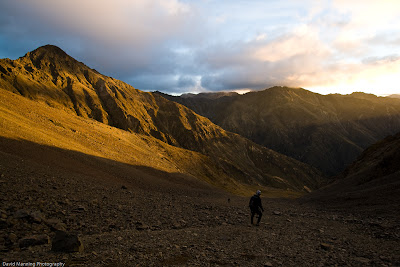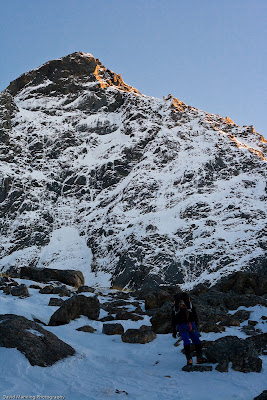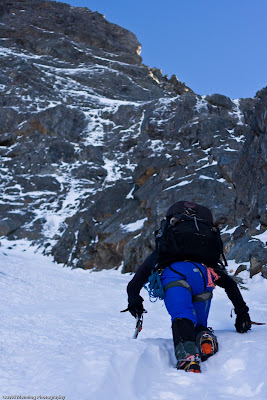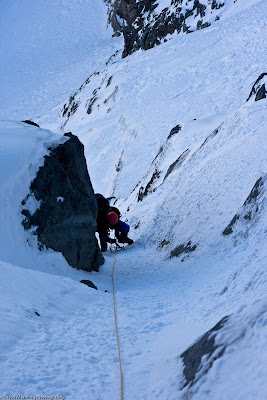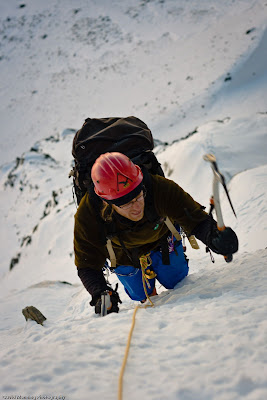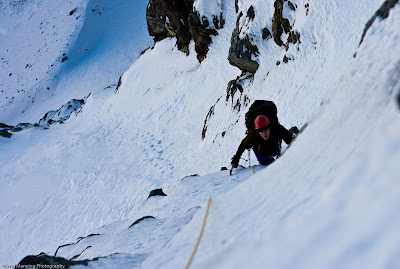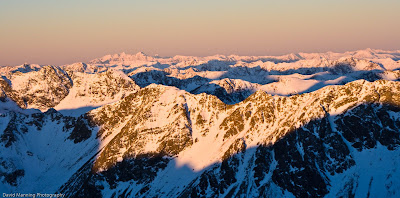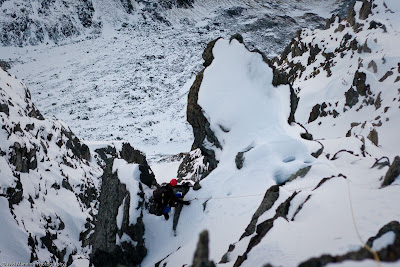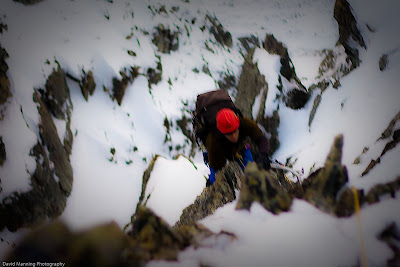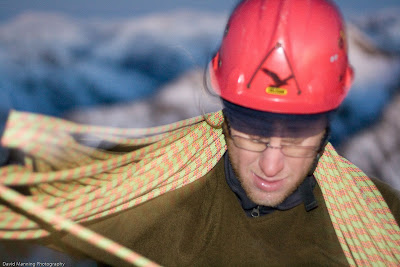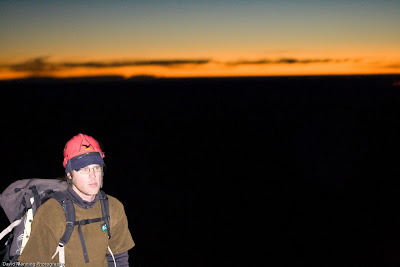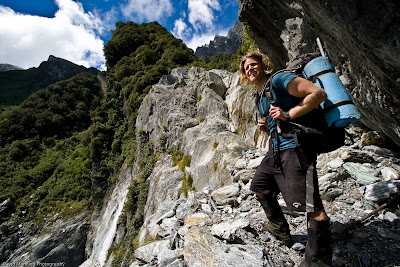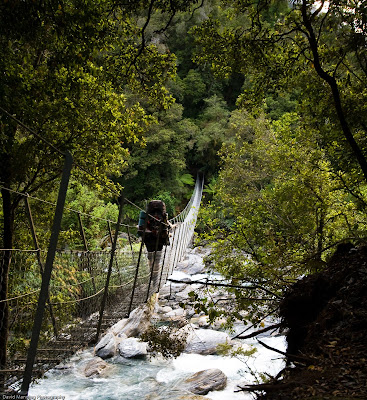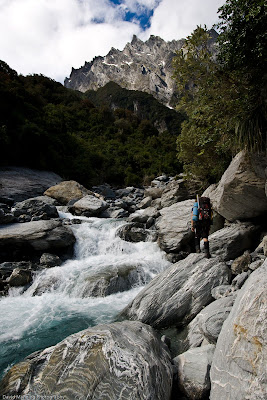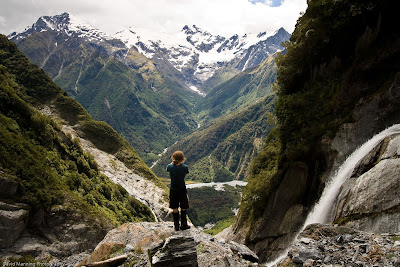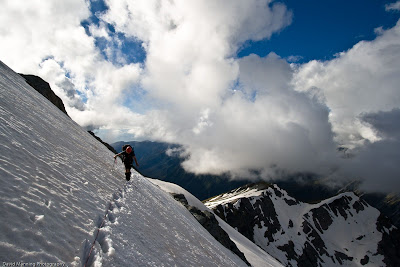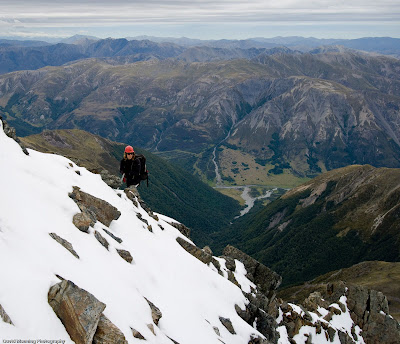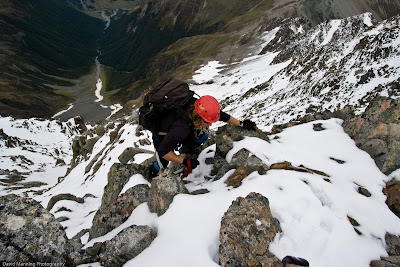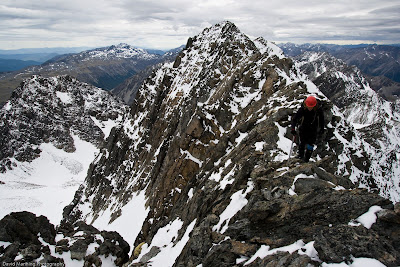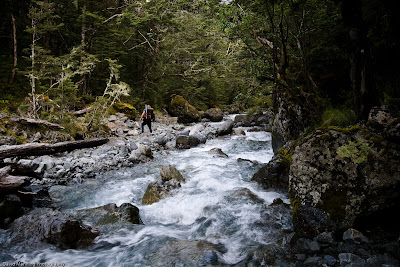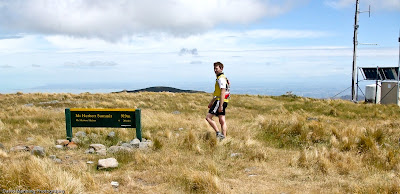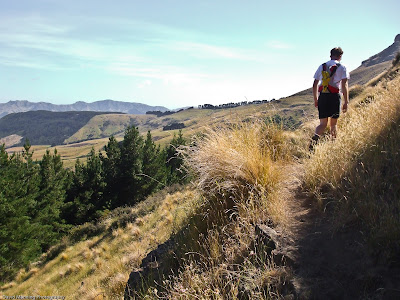
Cruising the McKenzie on Saturday evening we shared looks of doubt as first the sky was ablaze with a quintessential nor’west sunset followed by rain and high wind whilst rounding Lake Ohau. Perhaps we should have stayed in Christchurch like everyone else?
We bivvied at the road end and headed up the North Temple at first light. I’d been inspired to climb Steeple Peak after friends of mine, Glen Case, Brian Creswell and Stu the Scotsman had climbed it in a day, just a week before. They, like us, accessed the head of the South Temple via the North Temple. This choice of access turned out to be a bad call. Gaining Gunsight Pass from the North Temple was spooky to say the least. The combination of fresh rock fall and rotten snow accompanied by the gushing water wouldn’t lead me to recommend this route in late spring!

We entered the South Temple around lunch time and made our way over to the base of Weta Prowl. The slabs were still slightly wet from the previous night’s precipitation. However, by the time we roped up the rock was dry. There was only a slight breeze and the sky was clear. Our marginal window had turned into a bluebird day. Now we were glad we hadn’t stayed in Christchurch like everyone else.

As it turns out, one can easily scramble up the first pitch to a good belay ledge, we wasted little time protecting this section. The following three pitches consisted of pleasant, easy slab climbing. Although it was somewhat chossy there was a reasonable amount of natural gear and we were able to use the full length of our ropes.
At about half height Dave said he saw a weta. The name couldn’t be more appropriate.
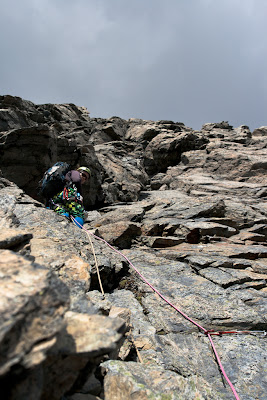
The last pitch on the face included some thinking climbing. I led through a section of small bulges followed by a fantastic stint of crimpy slab climbing. This was a welcome change from the easy but chossy sections lower down. This pitch ended just below the summit ridge.
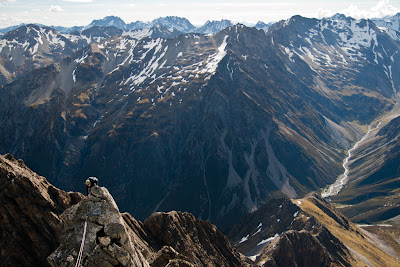
Normally one would expect ridges to be nerve wrecking and time consuming in this part of the world. So, Dave and I were pleasantly surprised to find the ridge consisted of solid rock. The final two pitches were sublime, exposed and solid! If nothing else Weta Prowl is worth climbing for these two pitches alone.

At the summit we were greeted by a paraglider who circled us a couple of times, an odd end to the route, but certainly entertaining. The scramble to the col, South of Steeple peak is straight forward; in fact the remainder of the trip should have been so.
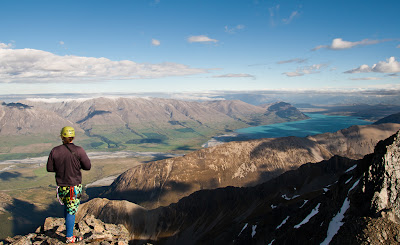
Dave forgot to bring the batteries for his head torch. We walked at a sluggish pace once it got dark. I can only imagine this was very painful for Dave, given the routine tripping on obstacles. In fact we were so slow that we didn’t get back to the car until after 1am on Monday morning.
The drive home was done in shifts and we took a 20 minute power nap in Geraldine, around sunrise. I don’t think either of us got any real sleep before going into work. Ah, the life of the weekend warrior.
Weta Prowl is an excellent low grade, multi pitch, alpine rock route and it can be done in more comfortable fashion by making use of South Temple hut or bivvying in the upper valley. The rock quality is good with reasonable natural gear and the climb is set in a stunning location. This is a real must do weekend climb!
Read more









